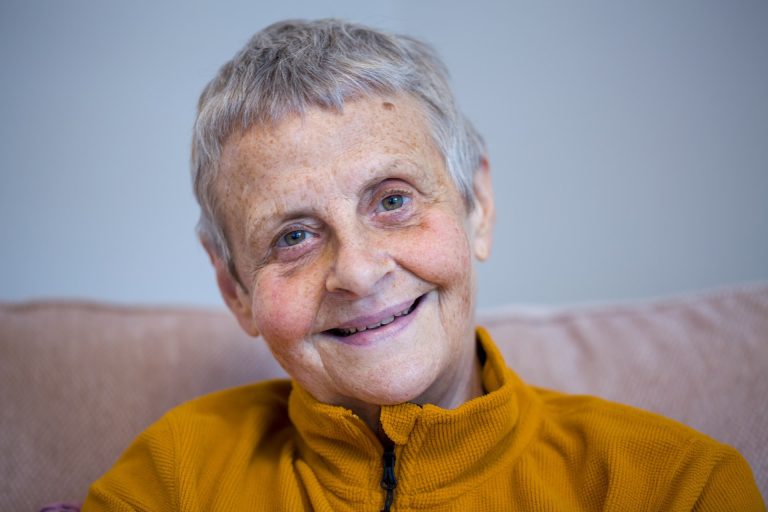Dr Jody Mason - University of Bath
PhD: 2016 - 2019
Blocking α-synuclein associated toxicity in Parkinson’s disease (and associated dementia)
Summary
Parkinson’s disease and Alzheimer’s disease are caused by the build-up of α-synuclein which forms toxic clumps known as Lewy bodies. In this project, many peptide inhibitors will be screened for their ability to stick to α-synuclein and stop formation of Lewy bodies. A series of biochemical techniques will be used to understand how successful inhibitors work and how effective they are likely to be as a therapeutic drug. This research will increase the understanding of α-synuclein clumping and accelerate the finding of a cure for these neurodegenerative diseases.
What do we know?
A causative agent in the pathology of Parkinson’s and related diseases is α-synuclein (αS), a protein which forms toxic clumps known as Lewy bodies, which interfere with normal brain function and lead to the symptoms of the disease. Despite the cost and number of sufferers, relatively little is understood about how αS deposits form and even less about the inhibitory mechanism of potential therapeutics. Lewy bodies accumulate inside dopamine producing cells in the brain, leading to their death, decreased dopamine levels, and ultimately the symptoms of PD.
What has been found out so far?
To address the gap in knowledge, we are developing peptide (very small protein) inhibitorsusing a novel system that allows us to screen vast peptide libraries inside living cells and pick out those that can stick to αS and prevent it being toxic. We combine this approach with biophysical and cell biology-based studies on brain cells to investigate how the selected peptides function to restore brain cell health. The novelty of the approach lies in the fact that selection is undertaken entirely inside cells with no assumptions made about how the peptides work. Rather, the cells can only live if the peptides can stick to aS and stop it from being toxic. This last point is important, as it has hampered the search for drugs able to remove clumps but not toxicity.
The following publications provides a comprehensive background to the subject:
Cheruvara H, Allen-Baume V.L, Kad N.M, Mason J.M. Intracellular screening of a peptide library to derive a potent peptide inhibitor of α-synuclein aggregation. J Biol Chem. 290, 7426-35 (2015).
Mason J.M. & Fairlie D.P. Towards peptide-based inhibitors as therapies for Parkinson's disease Future Med. Chem. 7, 2103-5 (2015).
What next?
The student will test the potency of new peptides and peptide-derived molecules using a range of biophysical, structural, and cell-based experiments. These will identify if our inhibitors work in terms of clumping and toxicity, how much is needed to work, where they bind, if they are stable in human serum and can cross biological membranes, and how they behave in neuronal cell cultures.
Why is this important?
There is currently no cure for Parkinson’s disease. Peptides capable of furthering our understanding of how αS clumping and toxicity are coupled will be identified. We are convinced that our cell based peptide-library approach has considerable potential to accelerate this process.
Glossary
Causative agent – The biological agent responsible for a disease
Pathology – The functional manifestations of a disease eg. Symptoms.
α-synuclein – A protein which accumulates in cells leading to protein aggregates associated with Parkinson’s disease and dementia with Lewy bodies.
Dopamine – A naturally produced chemical which plays several important roles in the brain and body.
Lewy Bodies – Toxic clumps of the peptide α-synuclein. The formation of Lewy bodies plays an important role in Parkinson’s disease, Alzheimer’s Disease and Dementia with Lewy bodies.
Peptide – Proteins are formed from the chemical linking of amino acids. Peptides are small proteins consisting of less than 40 amino acids linked together.
Inhibitor – A biomolecule which will bind to a protein and stop it from acting as expected.
Potency (of a protein) – A measure of the activity of a protein.
Human serum – In the human body, blood is composed of two components; serum and coagulant. The coagulant is what allows blood clots to form. Serum is everything else.
Further information
Please click here for more information about the work of Dr Jody Mason
Please click here for more information about the work of Dr Robert Williams
Photo: Researcher Richard Meade
Share this page




